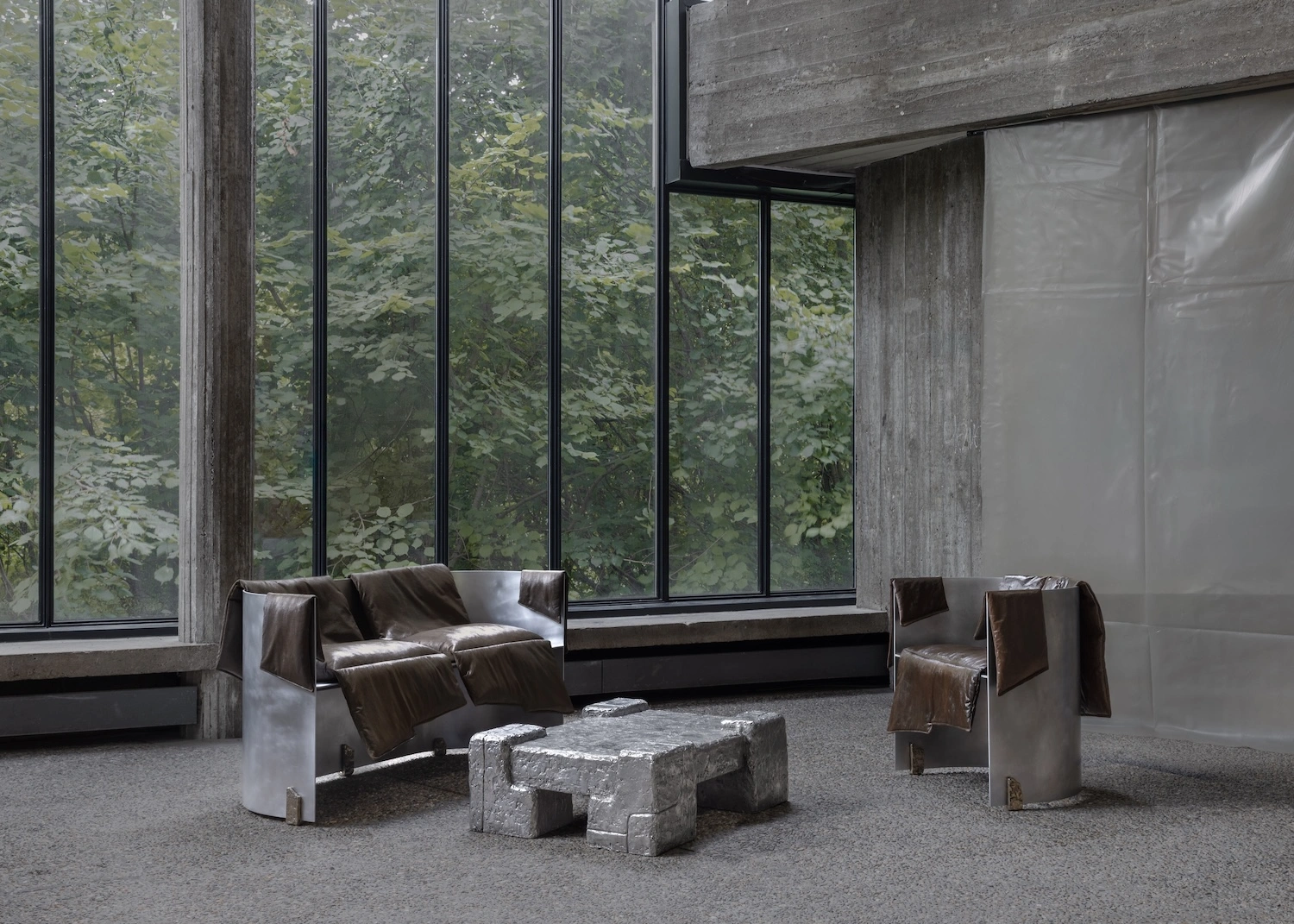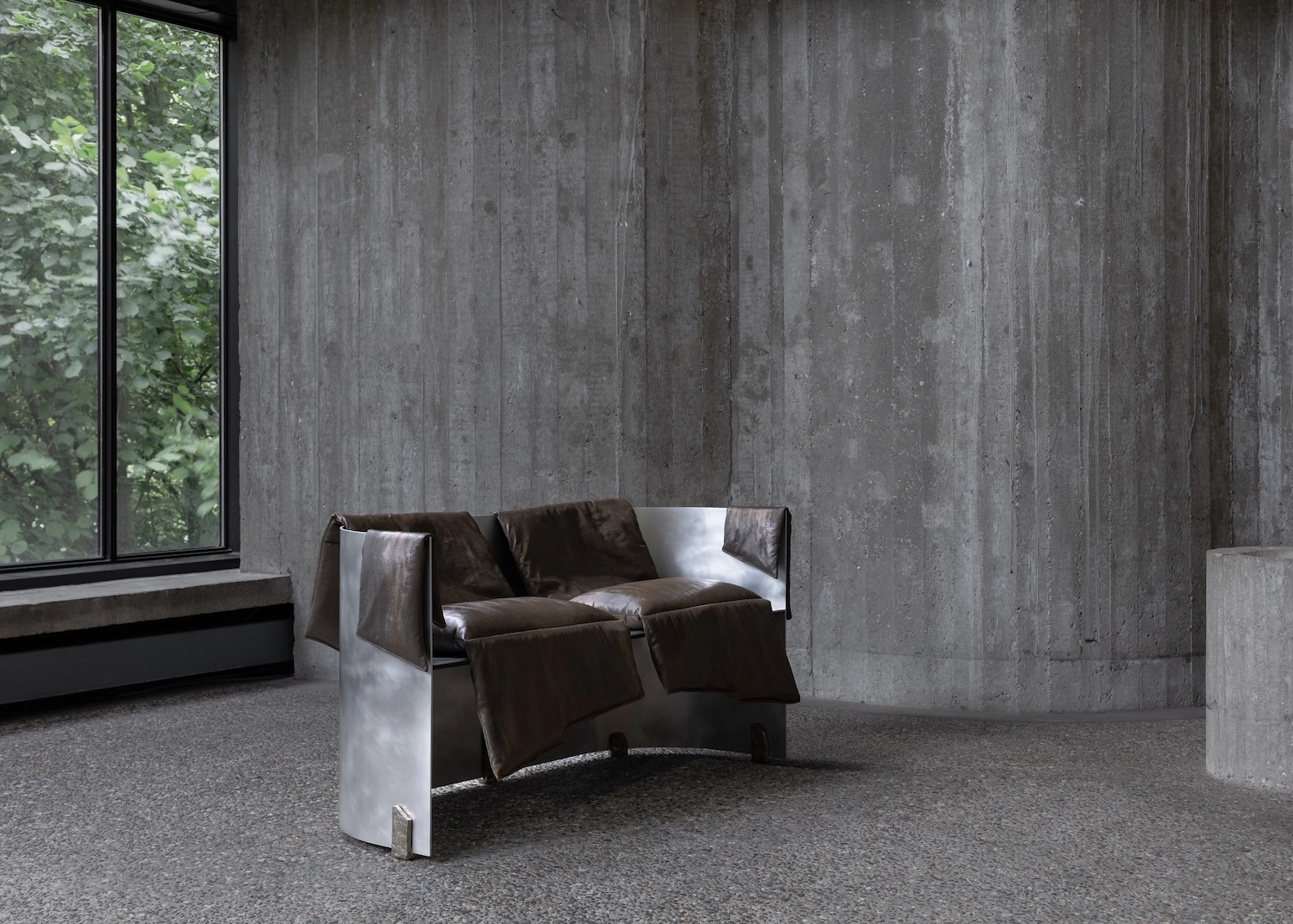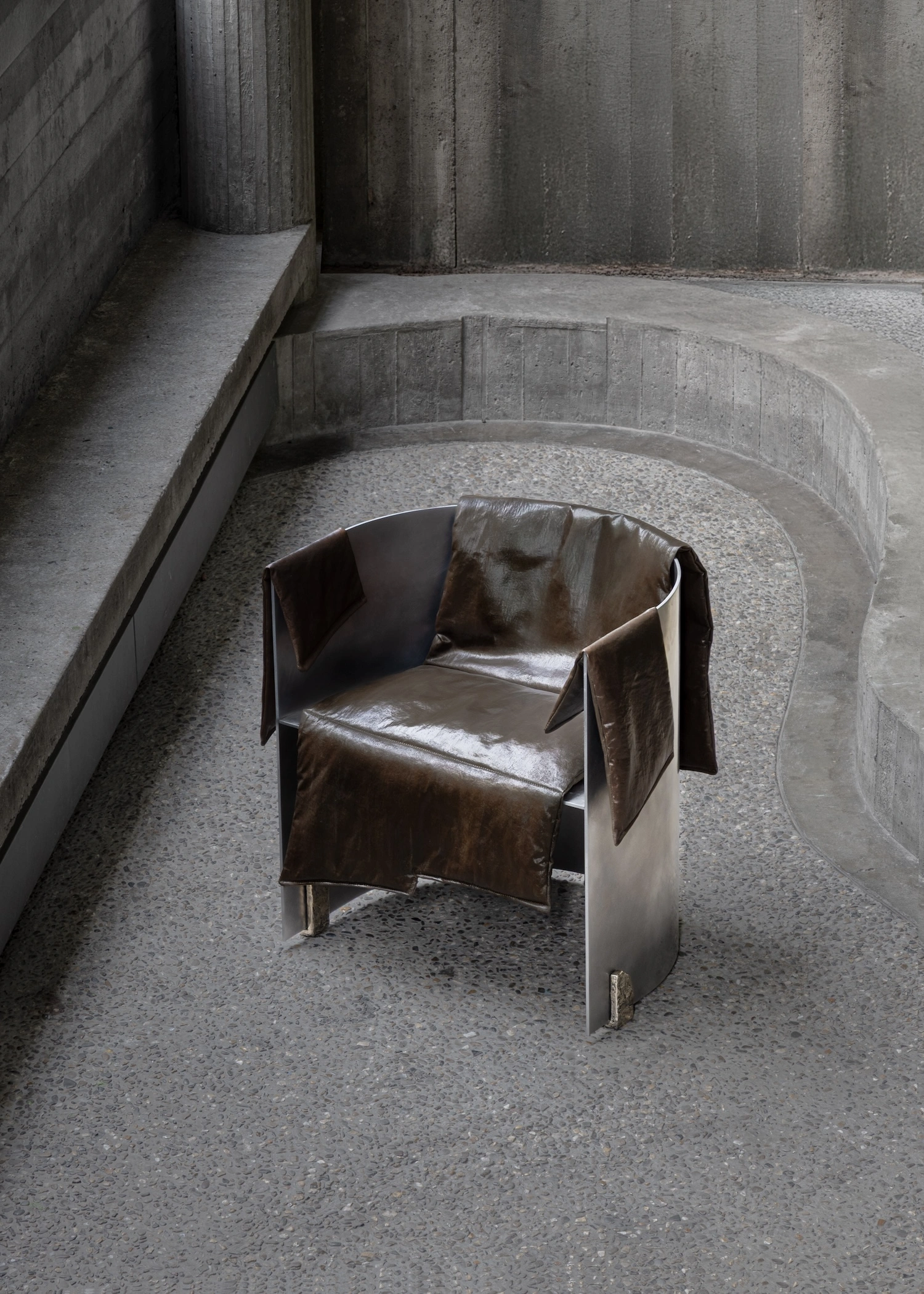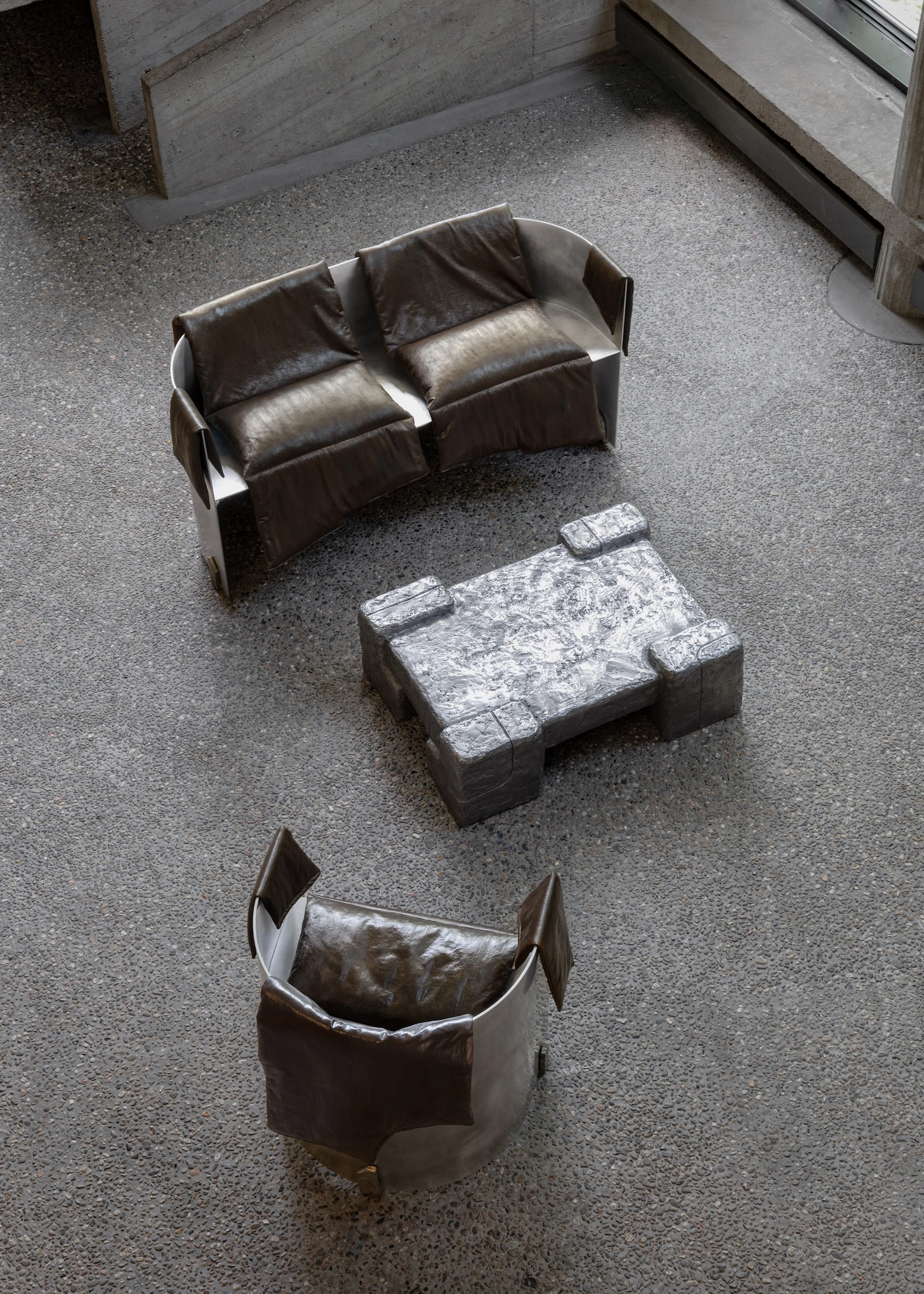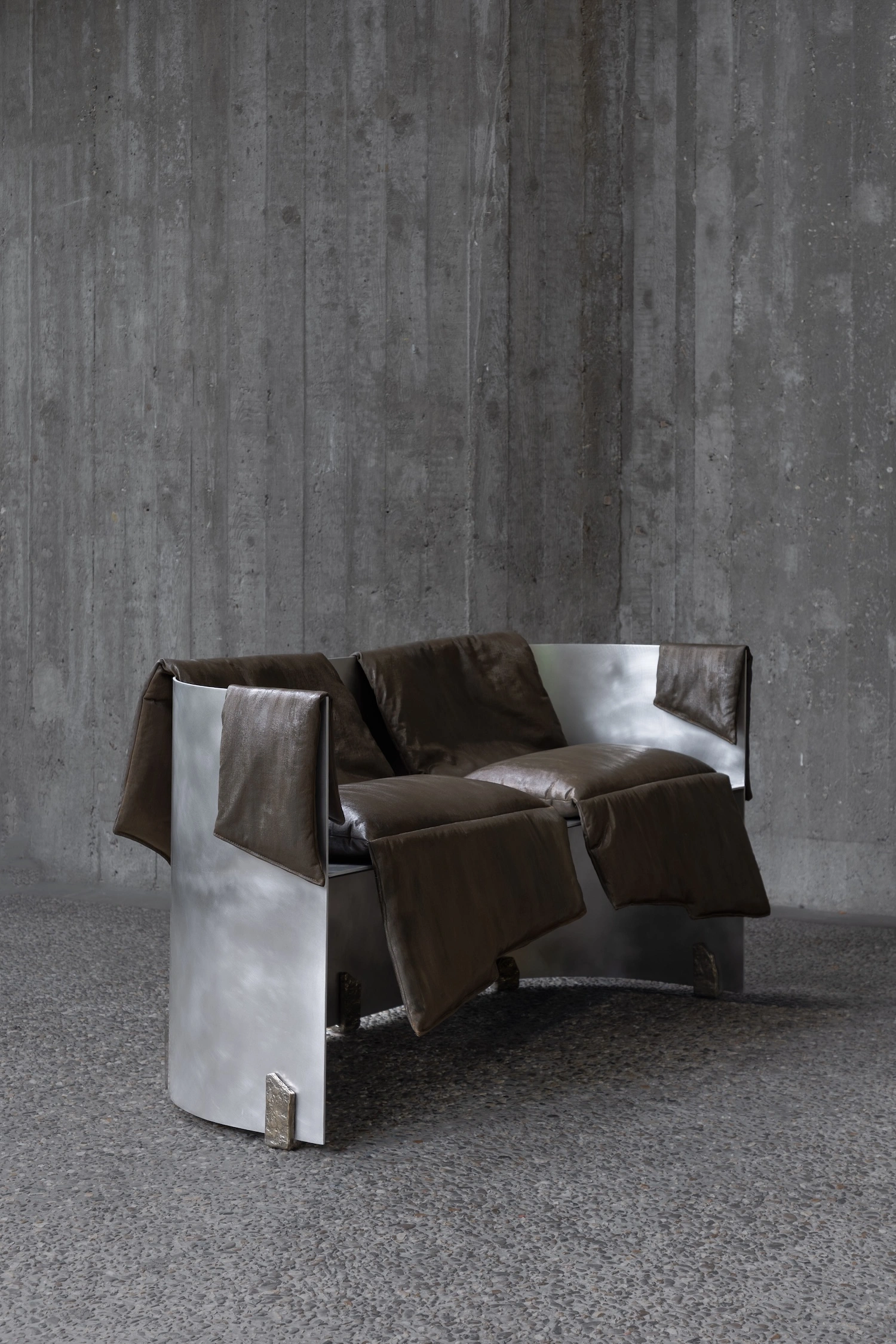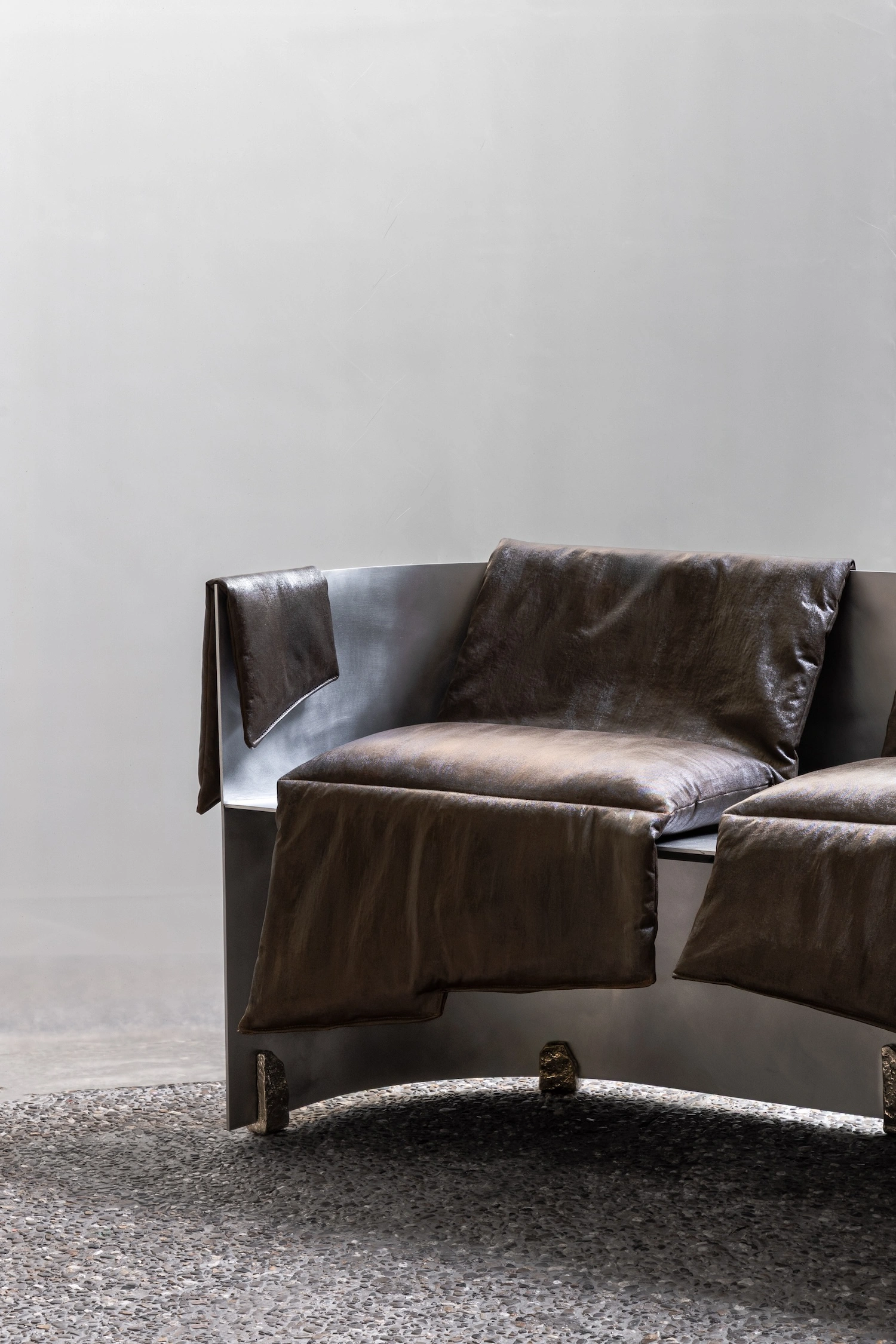Linde Freya Tangelder’s Reworked Series reframes furniture as architecture in miniature—layering materials, gestures, and histories to create a sensual, protective language of shelter and form.
This collection—anchored by a minimalist bench and chair—channels a precise architectural language while resisting the coldness of mere structural logic. It is in this tension, between shelter and softness, that her work truly unfolds.
Tangelder’s design vocabulary is informed by a cross-pollination of building fragments, construction techniques, and layered materials. The Reworked Bench exemplifies this with a brushed aluminum skeleton that is both rigid and reflective, set in gentle contrast to hand-lacquered cotton cushions. A white bronze foot completes the composition—not just as a literal support, but as a subtle shift in material tone and memory. The interplay of surface, weight, and temperature across these elements articulates a sophisticated, sculptural restraint.
What emerges is a study in how protection is rendered at multiple scales. The Reworked Series investigates the impulse to layer—from skin to shelter—without succumbing to overt metaphor. Instead, it constructs a kind of tactile architecture, where each material not only performs a function but speaks to an ancestral or industrial past. Aluminum, with its machinic clarity, leans into the language of infrastructure. Cotton, painted and lacquered by hand, introduces the vernacular of the domestic.
One of the series’ more compelling gestures is Tangelder’s translation of architectural floor plans into textile asymmetries. These aren’t decorative references but rather a means of abstracting spatial logic into intimate forms. The effect is akin to wearing a blueprint—an overlay of spatial memory embedded into surface. In doing so, the work challenges linear distinctions between plan and object, user and space.
The hand-painting process on cotton serves as a soft rebuttal to the sleek determinism of industrial fabrication. While the aluminum components suggest repeatability, the textile elements insist on singularity—on gesture, time, and touch. It’s a reminder that in an age of infinite reproduction, the aura of the handmade is not nostalgic but radical.

